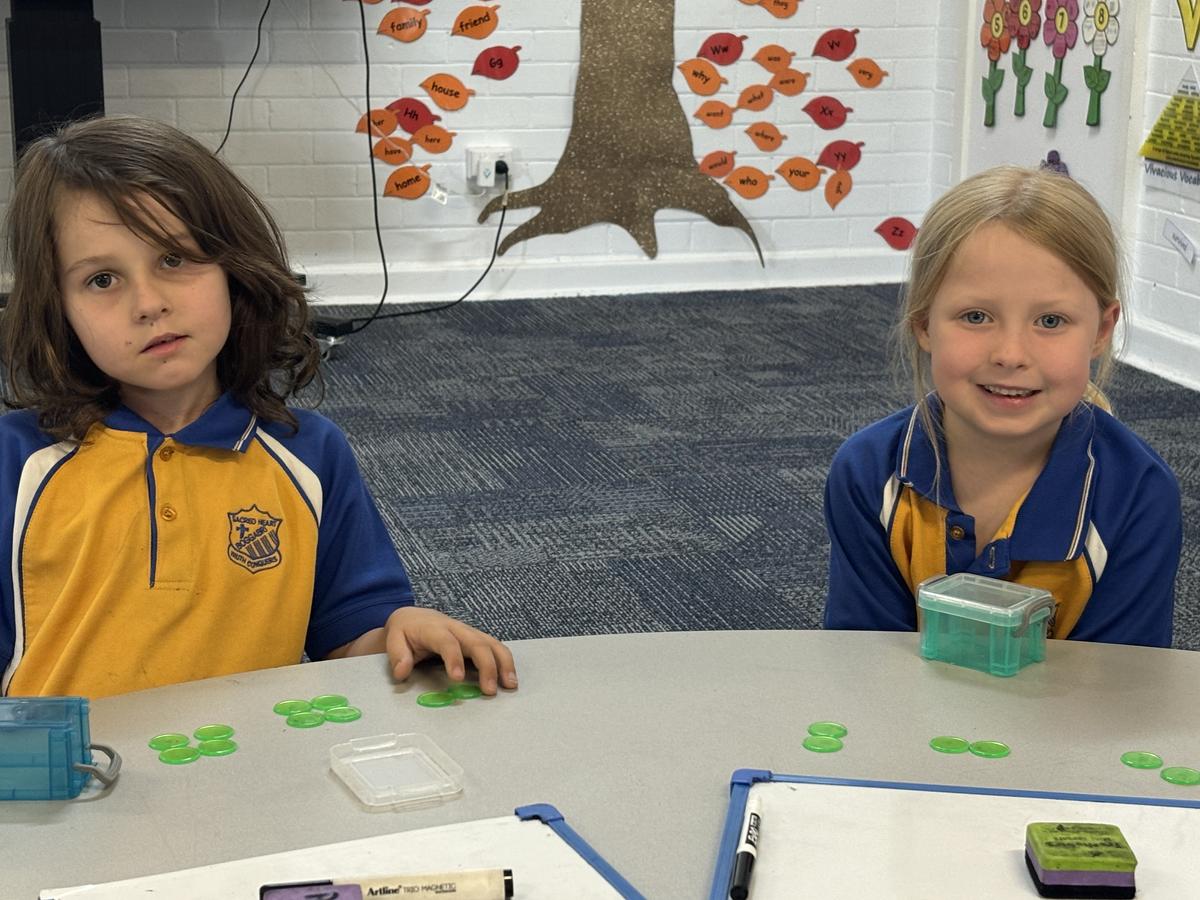Spotlight on the Classroom

SPOTLIGHT ON 3-6
Early Stage 1 - Division
Why is it important?
Give it a reason:
Division is important because it helps us split things into equal parts. This can help us share a portion of something equally or help us divide our time during the day so we can accomplish the tasks ahead of us.
On a monthly, weekly and even daily basis you will need to be able to use division skills in your life. Division is a basic skill you use daily!
Tips for Parents:
Before your child can begin to practice division problems, they first need to understand the concept of division. Explain it to them by relating the idea of division to the idea of sharing and grouping. Help them conceptualise it by explaining how a number of items can be shared equally between groups, and give them examples. You might show them how six cookies can be given to three children so each of them has two, or how someone with eight apples could give four each to two friends.
By creating practical examples with visual references, you can ensure your children will have an easier time grasping the concept of division.
Children are very visual and kinesthetic learners; they will process new information more quickly if they're able to see it in front of them and interact with it. Because of this, it can be easier to teach children division by creating math games to play with them.
Can you think of any objects at home which are in groups? If yes, what are they?
Walk around the kitchen with the student and identify any groups of food, cutlery, etc. Discuss that some groups may have different objects in them (knife, fork, spoon).
Can you think of any groups you may have in the bedroom? Show me what they are.
Role Plays...
“I would like you to help me set the table before we have our breakfast/lunch/dinner. We are going to share the cutlery, plates and glasses so that everyone has the same items in their place on the table. How many people will be eating?”
Hand your child the table items and let them have a go at sharing them to set each place at the table.
How many cutlery items will each person need? How many plates will each person need?
Once the table is set see whether your child is able to identify the total number of cutlery items that were shared.
Stage 1 -Year 1 and 2
TIPS FOR PARENTS: Years 1 and 2
Your child will begin to understand division as sharing and grouping. There are many easy ways you can support this at home.
Ask your child to practise division by sharing objects equally.
For example, share 8 objects into 2 equal groups. Using objects such as your child’s toys, items of food, or buttons helps them visualise what the calculation means and keeps them interested.
Ask your child to find out how many objects there are to begin with. Can they share the objects equally between the two of you? Help them to share objects one at a time between the two groups. When all the objects have been shared, ask your child how many there are in each group. If you have the same number, explain that your child has shared the objects equally into two groups, which is the same as dividing them by two.
If you do not have the same number, ask your child if the objects have been shared equally. For example, “We started with 11 objects and shared them into two groups. I have 6 objects, and you have 5 objects. Are they equal? If they are not equal, then 11 cannot be shared equally into two groups, so 11 cannot be divided by 2 equally using whole numbers or objects.”













